Learning how to tell if your dog has cancer can be one of the most important skills a Golden Retriever owner develops. Understanding what does cancer look like on a dog and recognizing what are the first signs of cancer in dogs could literally save your beloved companion’s life. Golden Retrievers face significantly higher cancer risks than most other breeds, making knowledge about how do you know if your dog has cancer absolutely essential for responsible ownership.
This comprehensive guide will teach you everything you need to know about identifying cancer in Golden Retrievers, from subtle early warning signs to obvious physical manifestations. Whether you’re a first-time Golden Retriever owner or have years of experience with this wonderful breed, understanding these critical health indicators will help you provide the best possible care for your furry family member.
Contents
- 1 Understanding Cancer Risk in Golden Retrievers
- 2 What Does Cancer Look Like on a Dog: Visual Signs to Watch For
- 3 What Are the First Signs of Cancer in Dogs: Early Warning Indicators
- 4 How to Tell If Your Dog Has Cancer: Physical Examination Techniques
- 5 Advanced Detection Methods: When Home Examination Isn’t Enough
- 6 Age-Related Cancer Detection Considerations
- 7 Breed-Specific Cancer Types and Their Unique Symptoms
- 8 Environmental and Lifestyle Factors Affecting Cancer Detection
- 9 When to Seek Emergency Veterinary Care
- 10 Prevention Through Early Detection
- 11 Nutritional Support for Cancer Prevention and Detection
- 12 Building a Support Network for Cancer Detection
- 12.1 How to tell if your dog has cancer in the early stages?
- 12.2 What does cancer look like on a dog’s skin?
- 12.3 How do you know if your dog has cancer versus other health problems?
- 12.4 What are the first signs of cancer in dogs that owners commonly miss?
- 12.5 Can you feel tumors on dogs during home examinations?
- 12.6 How quickly do cancer symptoms progress in Golden Retrievers?
- 12.7 What should I do if I suspect my Golden Retriever has cancer?
- 12.8 Are certain areas of a dog’s body more prone to cancer?
- 13 Final Thoughts
Understanding Cancer Risk in Golden Retrievers
Golden Retrievers unfortunately hold the distinction of having one of the highest cancer rates among all dog breeds, with studies indicating that approximately 60% will develop some form of cancer during their lifetime. This sobering statistic makes learning how to tell if your dog has cancer particularly crucial for Golden Retriever families. The breed’s genetic predisposition stems from decades of selective breeding that concentrated certain traits while inadvertently increasing cancer susceptibility.
Understanding what are the first signs of cancer in dogs becomes even more critical when you consider that Golden Retrievers often hide illness due to their eager-to-please personalities. These dogs may continue their normal routines and maintain their cheerful demeanor even when experiencing discomfort, making early cancer detection challenging for even experienced owners. This natural tendency to mask symptoms means owners must become particularly skilled at recognizing subtle changes that might indicate developing health problems.
The most common cancer types affecting Golden Retrievers include hemangiosarcoma, lymphoma, osteosarcoma, and mast cell tumors. Each presents different challenges when it comes to learning how do you know if your dog has cancer, as symptoms can vary dramatically depending on the cancer type, location, and stage of development. Some cancers produce obvious visible signs, while others remain hidden inside the body until they reach advanced stages.
What Does Cancer Look Like on a Dog: Visual Signs to Watch For
Understanding what does cancer look like on a dog requires recognizing that cancer can manifest in numerous ways, from obvious external growths to subtle internal changes. External tumors represent the most visible form of cancer and can appear anywhere on your Golden Retriever’s body as lumps, bumps, or unusual growths. These masses may vary significantly in size, shape, color, and texture, making it essential to have any new growth professionally evaluated regardless of its appearance.
Skin cancer in Golden Retrievers often presents as changes in existing moles, new pigmented areas, or sores that don’t heal properly. What does cancer look like on a dog in terms of skin manifestations can include raised bumps, flat patches, ulcerated areas, or changes in hair growth patterns around affected sites. Some skin cancers appear as innocent-looking bumps initially but may grow rapidly or change appearance over time.
Cancer sores on dogs can develop anywhere on the body and may initially resemble minor injuries or infections. These sores typically fail to heal within normal timeframes despite appropriate care and may actually worsen over days or weeks. Understanding that persistent, non-healing sores represent potential cancer signs helps owners recognize when seemingly minor injuries require professional veterinary evaluation.
Oral cancer manifestations help illustrate what does cancer look like on a dog when affecting the mouth and surrounding areas. These cancers may appear as growths on the gums, tongue, or roof of the mouth, often causing difficulty eating, excessive drooling, or bad breath that doesn’t improve with dental care. Some oral cancers cause visible swelling in the face or jaw area, while others remain hidden until they significantly impact eating or breathing.
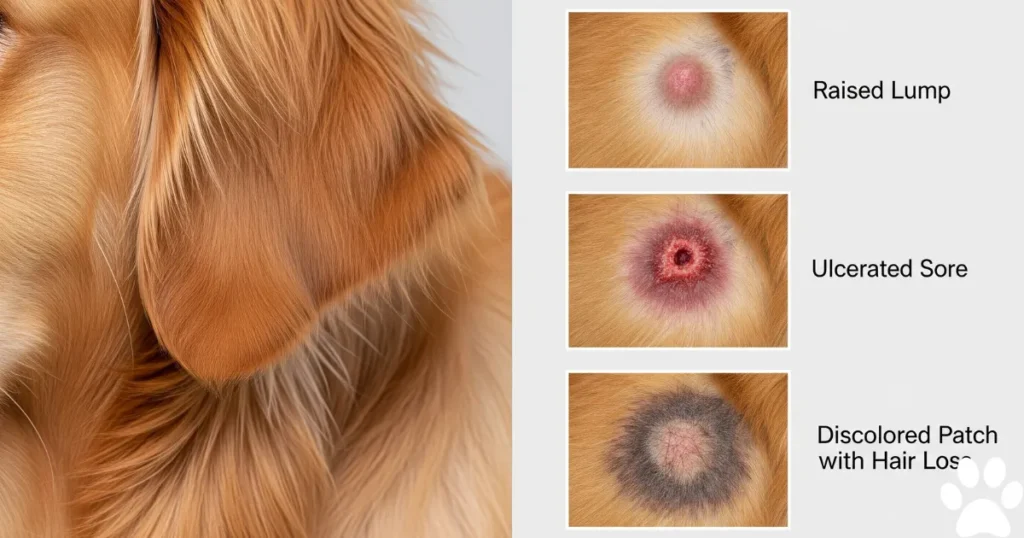
What Are the First Signs of Cancer in Dogs: Early Warning Indicators
Recognizing what are the first signs of cancer in dogs often involves detecting subtle changes that might easily be attributed to aging or minor health issues. Weight loss without dietary changes frequently represents one of the earliest indicators, though it may occur gradually over weeks or months. Golden Retrievers experiencing unexplained weight loss should receive veterinary evaluation even if they maintain normal appetite and activity levels initially.
Changes in appetite patterns often signal developing health problems, including various cancer types. What are the first signs of cancer in dogs related to eating behaviors can include decreased interest in food, difficulty chewing or swallowing, dropping food while eating, or changes in food preferences. Some dogs may show increased appetite initially if cancers affect hormone production or metabolism.
Behavioral modifications frequently accompany physical cancer symptoms and represent important early warning signs that help answer how do you know if your dog has cancer. Golden Retrievers may become less social, show reduced interest in previously enjoyed activities, sleep more than usual, or display subtle changes in their interaction patterns with family members. These behavioral changes often develop gradually and may be easily overlooked during busy daily routines.
Energy level changes represent another category of what are the first signs of cancer in dogs that Golden Retriever owners should monitor carefully. Dogs may show decreased stamina during walks, reluctance to exercise or play, or unusual fatigue after normal activities. Some cancers cause dogs to seem restless or unable to get comfortable, while others produce general lethargy that worsens progressively over time.

How to Tell If Your Dog Has Cancer: Physical Examination Techniques
Learning how to tell if your dog has cancer through hands-on examination techniques empowers owners to detect potential problems early when treatment options remain most effective. Monthly physical examinations should become routine practice for all Golden Retriever owners, involving systematic evaluation of your dog’s entire body using gentle but thorough palpation techniques.
Starting with the head and working systematically toward the tail ensures comprehensive coverage during home examinations. How to tell if your dog has cancer begins with checking the lymph nodes under the jaw, which should feel soft and barely detectable when healthy. Enlarged lymph nodes often represent early signs of cancer in dogs and feel like firm, moveable lumps under the skin.
The neck and chest area examination helps identify dog cancer symptoms related to respiratory or cardiovascular systems. Feel along the neck for unusual swellings or masses, and observe your dog’s breathing patterns for any changes in rate, depth, or effort. Persistent coughing, especially if it worsens over time, may indicate lung cancer or tumors affecting the chest cavity.
Abdominal examination techniques help detect internal masses or swelling that might indicate various cancer types. Gentle palpation of the abdomen may reveal enlarged organs, fluid accumulation, or masses that weren’t previously present. However, many internal cancers remain undetectable through physical examination, emphasizing the importance of regular veterinary checkups for comprehensive evaluation.
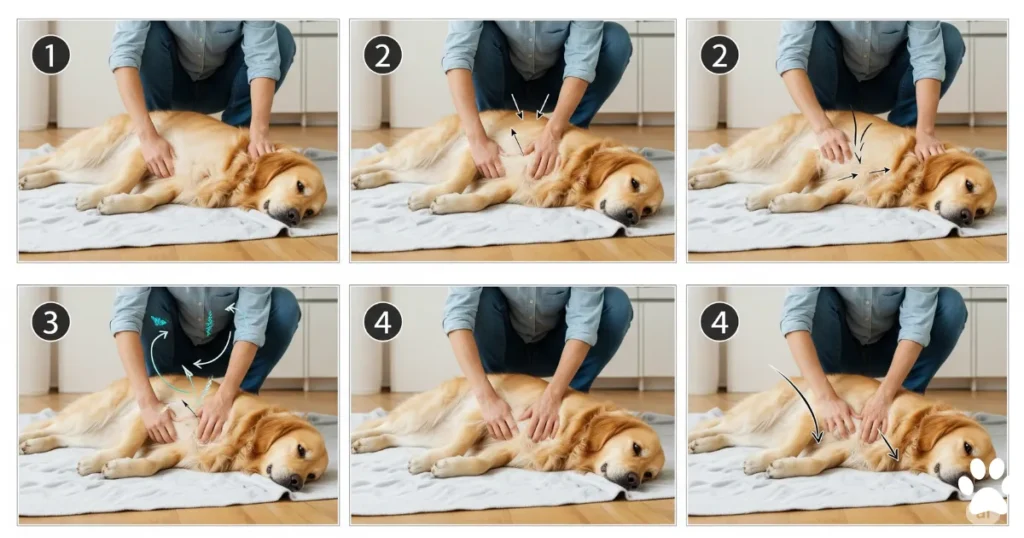
Advanced Detection Methods: When Home Examination Isn’t Enough
While learning how do you know if your dog has cancer through home examination provides valuable early detection capabilities, some cancers require advanced diagnostic techniques for identification. Internal cancers affecting organs like the spleen, liver, or lungs may produce no obvious external dog cancer symptoms until they reach advanced stages, making professional veterinary evaluation essential for complete cancer screening.
Blood work analysis can reveal abnormalities that suggest developing cancer before obvious clinical symptoms appear. Changes in blood cell counts, organ function markers, or tumor-specific proteins may indicate canine cancer symptoms months before physical signs become apparent to owners. Regular blood work screening becomes particularly important for Golden Retrievers over seven years old due to their elevated cancer risk.
Imaging studies including X-rays, ultrasounds, and CT scans provide detailed views of internal organs and can identify tumors not detectable through physical examination alone. These diagnostic tools help veterinarians locate cancers, determine their extent, and plan appropriate treatment strategies. Understanding when imaging studies are recommended helps owners make informed decisions about their Golden Retriever’s diagnostic care.
Fine needle aspiration and biopsy procedures provide definitive cancer diagnoses by allowing veterinary pathologists to examine actual cell samples under microscopes. These minimally invasive procedures can often be performed during regular veterinary visits and provide crucial information about what does a tumor look like on a dog at the cellular level.
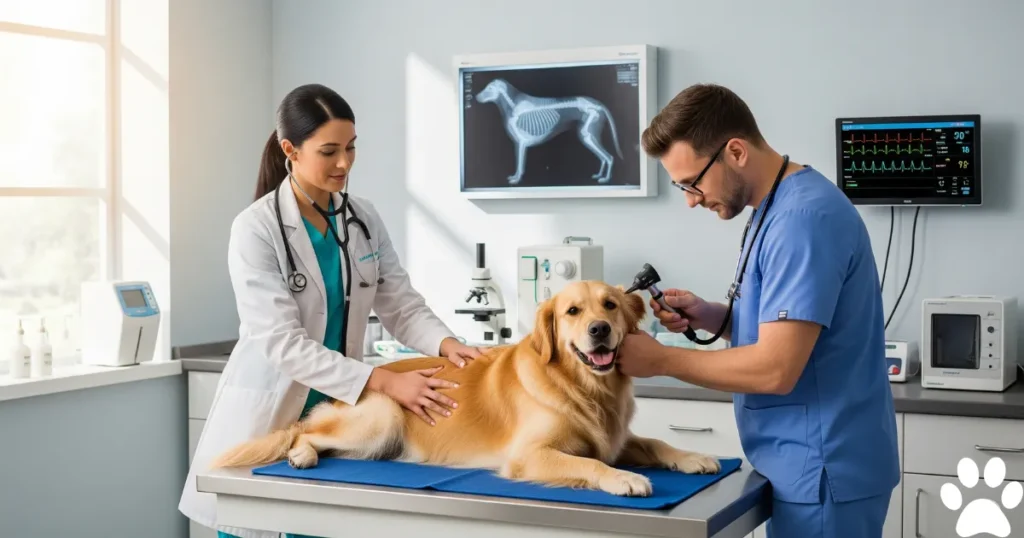
Age-Related Cancer Detection Considerations
Understanding how to tell if your dog has cancer requires considering age-related factors that influence cancer development and symptom presentation in Golden Retrievers. Puppies and young adults rarely develop cancer, but certain aggressive types like lymphoma can affect dogs of any age. Young Golden Retrievers showing what are the first signs of cancer in dogs require immediate veterinary attention due to the unusual nature of early-onset cancer.
Middle-aged Golden Retrievers between four and seven years old face moderate cancer risks that require increased vigilance for dog cancer symptoms without causing excessive anxiety about every minor health change. This age group benefits from more frequent veterinary examinations and may require baseline diagnostic testing to establish normal values for future comparison.
Senior Golden Retrievers over eight years old require the most intensive monitoring for canine cancer symptoms due to their significantly elevated cancer risk. Age-related changes can mask early cancer symptoms, making it more challenging to distinguish normal aging from disease development. Regular veterinary examinations every three to four months become essential for early cancer detection in senior dogs.
How do you know if your dog has cancer versus normal aging requires understanding the differences between gradual age-related decline and more rapid changes associated with disease development. Cancer symptoms typically progress more quickly than normal aging changes and may affect specific body systems rather than causing generalized decline.
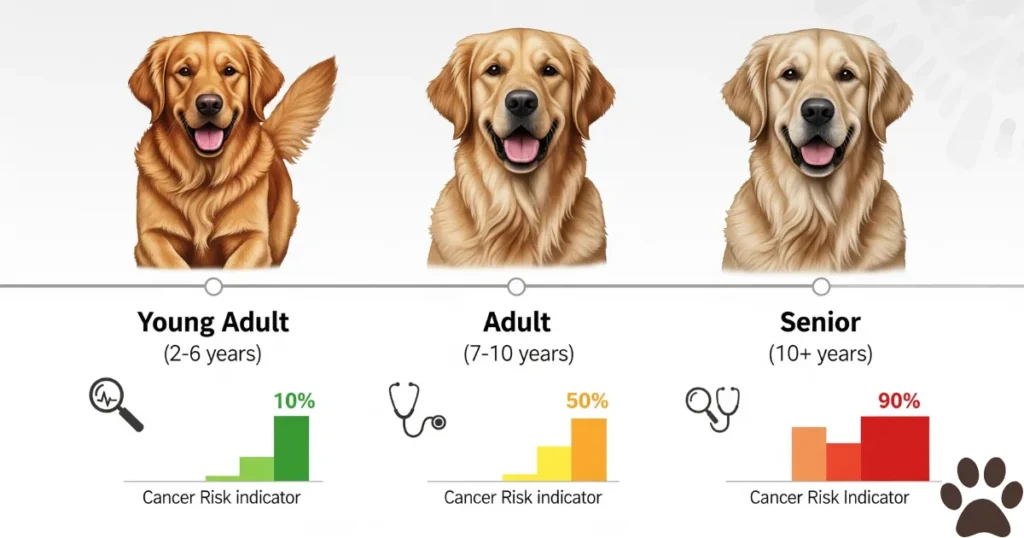
Breed-Specific Cancer Types and Their Unique Symptoms
Golden Retrievers develop certain cancer types more frequently than other breeds, each presenting unique challenges when learning what does cancer look like on a dog. Hemangiosarcoma, often called the silent killer, affects blood vessels and commonly develops in the spleen, heart, or liver. This aggressive cancer rarely shows obvious what are the first signs of cancer in dogs until it reaches life-threatening stages.
Signs dog dying hemangiosarcoma can include sudden weakness, collapse, pale gums, rapid breathing, or abdominal swelling. This cancer demonstrates why learning how to tell if your dog has cancer must include understanding emergency symptoms that require immediate veterinary attention. Unfortunately, hemangiosarcoma often progresses so rapidly that obvious symptoms appear only in advanced stages.
Lymphoma represents another common cancer type in Golden Retrievers, though it often responds well to treatment when detected early. What does cancer look like on a dog with lymphoma typically involves enlarged lymph nodes that owners can feel as firm lumps under the jaw, in the armpits, or around the groin area. Unlike some other cancers, lymphoma often produces detectable dog cancer symptoms that alert owners to seek veterinary care.
Osteosarcoma primarily affects the long bones in Golden Retrievers’ legs and causes significant pain that manifests as persistent limping or reluctance to exercise. Understanding final stages of osteosarcoma in dogs helps owners recognize when this aggressive bone cancer requires immediate attention and helps them make informed decisions about treatment options.
Environmental and Lifestyle Factors Affecting Cancer Detection
Understanding how do you know if your dog has cancer includes recognizing how environmental factors may influence cancer development and symptom presentation. Golden Retrievers exposed to pesticides, herbicides, or other chemical toxins may develop cancer at younger ages or show more aggressive disease progression. Environmental cancer risks make early detection skills even more critical for responsible pet ownership.
Dietary factors can influence both cancer development and the ease of detecting what are the first signs of cancer in dogs. Poor-quality diets with artificial preservatives and chemicals may increase cancer risks, while high-quality nutrition supports immune system function and may help prevent some cancer types. Proper nutrition also helps maintain ideal body weight, making physical examination for lumps and masses more effective.
Exercise habits affect cancer risk and detection in Golden Retrievers, as regular activity supports immune function and helps maintain healthy weight. However, owners should monitor exercising dogs for signs of unusual fatigue, difficulty breathing, or reluctance to continue normal activities, as these may represent canine cancer symptoms requiring professional evaluation.
Stress factors including major life changes, inadequate socialization, or chronic anxiety may influence cancer development in Golden Retrievers. While stress alone doesn’t cause cancer, it can suppress immune system function and potentially contribute to disease development. Understanding these connections helps owners create healthier environments that support cancer prevention.
When to Seek Emergency Veterinary Care
Certain dog cancer symptoms require immediate emergency veterinary attention due to their potential to become life-threatening within hours or days. Learning how to tell if your dog has cancer includes understanding these critical warning signs that can not wait for regular veterinary appointments. Sudden weakness, collapse, or difficulty breathing may indicate rapidly progressing cancers or cancer-related complications.
Severe bleeding from any location represents a medical emergency that may indicate cancer affecting blood vessels or organs with rich blood supplies. Golden Retrievers experiencing significant bleeding should receive immediate veterinary care, as delays can result in life-threatening blood loss or shock. Understanding these emergency what are the first signs of cancer in dogs can save lives through rapid intervention.
Persistent vomiting, inability to urinate or defecate, or dramatic changes in consciousness level may indicate cancer complications requiring emergency treatment. These canine cancer symptoms can develop rapidly and may represent medical emergencies that worsen quickly without appropriate intervention. Having emergency veterinary contact information readily available ensures prompt care during crisis situations.
Seizures, difficulty swallowing, or sudden paralysis may indicate cancer affecting the nervous system and require immediate medical evaluation. These serious symptoms can worsen rapidly without appropriate treatment and may become irreversible if intervention is delayed. Golden Retriever owners should never hesitate to seek emergency care when observing these critical neurological dog cancer symptoms.
Prevention Through Early Detection
Understanding how to tell if your dog has cancer forms the foundation of effective cancer prevention strategies for Golden Retrievers. While genetic predisposition can not be eliminated, early detection dramatically improves treatment outcomes and may extend quality life significantly. Monthly home examinations combined with regular veterinary checkups provide the best approach for catching what are the first signs of cancer in dogs before they become advanced.
Photographic documentation of any unusual findings helps track changes over time and provides valuable information for veterinary teams. Taking pictures of suspicious lumps, skin changes, or other abnormalities creates objective records that help determine if what does cancer look like on a dog is changing or remaining stable between veterinary visits.
Maintaining detailed health records including weight measurements, appetite changes, activity level modifications, and any concerning symptoms helps veterinarians identify patterns that might indicate developing cancer. These records become particularly valuable when subtle canine cancer symptoms develop gradually over extended periods.
Regular veterinary relationships ensure continuity of care and enable veterinarians to detect subtle changes that might not be obvious during isolated visits. Veterinarians familiar with individual Golden Retrievers can more easily identify dog cancer symptoms that represent changes from normal baseline behavior or physical condition.
Nutritional Support for Cancer Prevention and Detection
Proper nutrition plays crucial roles in cancer prevention and may influence the ease of detecting what does cancer look like on a dog through physical examination. Golden Retrievers maintained at ideal body weight allow for more effective palpation during home examinations, making lumps and masses easier to identify. Obesity can mask tumor symptoms in dogs and make physical examination less reliable.
High-quality diets rich in antioxidants and anti-inflammatory compounds support immune system function and may help prevent some cancer types. Foods containing omega-3 fatty acids, natural antioxidants, and high-quality proteins provide nutritional foundations that support overall health and potentially reduce cancer development risks.
Avoiding processed foods with artificial preservatives, colors, and chemicals helps reduce Golden Retrievers’ exposure to potentially carcinogenic substances. Reading ingredient labels carefully and choosing natural, minimally processed foods represents important preventive measures for responsible pet ownership.
Dietary supplements including fish oil, probiotics, and antioxidant compounds may provide additional cancer prevention benefits, though owners should consult with veterinary nutritionists before adding supplements to their dogs’ diets. Proper supplementation requires understanding individual dogs’ needs and existing dietary intake to avoid imbalances.
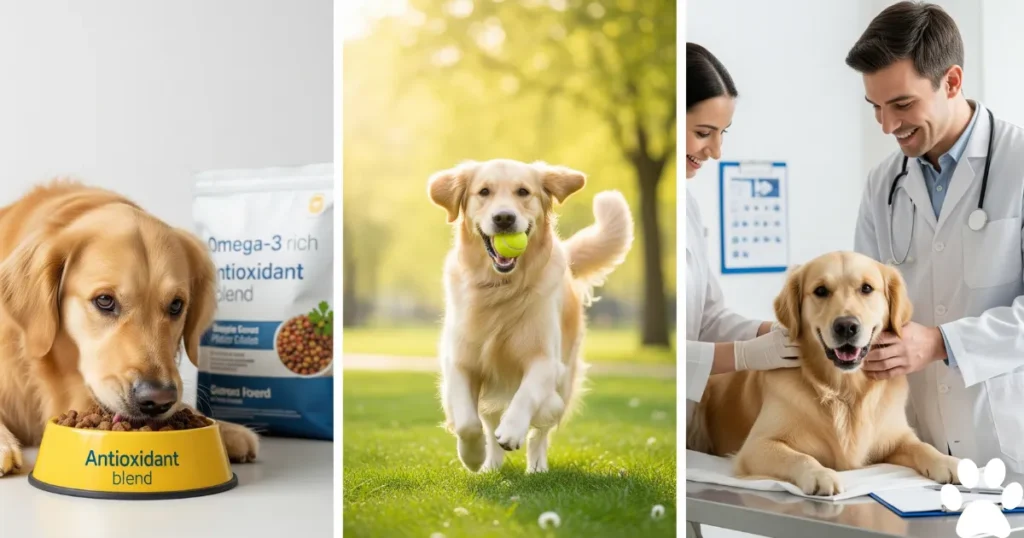
Building a Support Network for Cancer Detection
Learning how do you know if your dog has cancer becomes easier when owners build strong relationships with veterinary professionals who understand Golden Retriever health needs. Establishing care with veterinarians experienced in cancer detection and treatment provides access to expertise that significantly improves early detection capabilities and treatment outcomes.
Connecting with other Golden Retriever owners through breed clubs, online forums, or local groups provides valuable support networks and shared knowledge about what are the first signs of cancer in dogs. Experienced owners often share insights about subtle symptoms and changes that helped them detect cancer early in their own dogs.
Professional grooming services can provide additional monitoring opportunities, as groomers often notice changes in skin condition, lumps, or other abnormalities during regular grooming sessions. Building relationships with experienced groomers who understand what does cancer look like on a dog adds another layer of detection capability to your dog’s health care team.
Emergency veterinary contact information should be readily available to all family members, including after-hours clinics and specialty cancer treatment centers. Having this information organized and accessible ensures prompt care when canine cancer symptoms require immediate attention.
How to tell if your dog has cancer in the early stages?
Learning how to tell if your dog has cancer early requires watching for subtle changes like unexplained weight loss, decreased appetite, unusual fatigue, or new lumps anywhere on the body. What are the first signs of cancer in dogs often include behavioral changes such as reduced activity, sleeping more than usual, or reluctance to exercise. Monthly physical examinations help detect external changes before they become obvious.
What does cancer look like on a dog’s skin?
What does cancer look like on a dog varies significantly depending on cancer type. Skin cancers may appear as raised bumps, flat patches, ulcerated sores, or changes in existing moles. Some appear pink or flesh-colored, while others may be dark brown or black. Any new growth, sore that doesn’t heal within 2-3 weeks, or change in existing skin features should be evaluated by a veterinarian.
How do you know if your dog has cancer versus other health problems?
How do you know if your dog has cancer versus other conditions requires professional veterinary diagnosis through physical examination, blood work, imaging studies, or tissue sampling. While cancer symptoms can mimic other diseases, persistent or progressive symptoms that don’t respond to standard treatments often warrant cancer screening, especially in Golden Retrievers due to their high cancer risk.
What are the first signs of cancer in dogs that owners commonly miss?
What are the first signs of cancer in dogs that are often overlooked include gradual weight loss, subtle appetite changes, decreased activity levels, and minor behavior modifications. Golden Retrievers’ tendency to hide illness makes these early symptoms particularly easy to miss. Changes in bathroom habits, mild lameness that doesn’t improve, or increased sleeping may also be early indicators.
Can you feel tumors on dogs during home examinations?
Yes, many external dog tumors can be detected through careful palpation during monthly home examinations. Run your hands systematically over your Golden Retriever’s entire body, feeling for any new lumps, bumps, or swellings. However, not all cancers produce detectable external masses, and some tumor symptoms in dogs relate to internal cancers requiring professional diagnostic imaging.
How quickly do cancer symptoms progress in Golden Retrievers?
Cancer symptom progression varies dramatically depending on the type. Aggressive cancers like hemangiosarcoma can progress from undetectable to life-threatening within weeks, while slow-growing tumors may take months to produce noticeable symptoms. Any persistent changes lasting more than a few days warrant veterinary evaluation, especially in Golden Retrievers with their high cancer predisposition.
What should I do if I suspect my Golden Retriever has cancer?
If you suspect canine cancer symptoms, schedule a veterinary appointment immediately. Document your observations including photographs of visible changes, notes about behavior modifications, and timeline of symptom development. Bring a list of questions and concerns to discuss with your veterinarian. Early professional evaluation significantly improves treatment outcomes and options.
Are certain areas of a dog’s body more prone to cancer?
Cancer can develop anywhere, but common locations include skin and subcutaneous tissues, lymph nodes, mammary glands in females, mouth and oral cavity, and internal organs like the spleen and liver. What does cancer look like on a dog depends partly on location, with external cancers being more easily detected than internal tumors that require imaging studies for identification.
Final Thoughts
Learning how to tell if your dog has cancer represents one of the most valuable skills any Golden Retriever owner can develop. The knowledge you’ve gained about what does cancer look like on a dog and recognizing what are the first signs of cancer in dogs could literally save your beloved companion’s life through early detection and intervention. With Golden Retrievers facing up to a 60% lifetime cancer risk, this expertise becomes essential rather than simply helpful.
Understanding how do you know if your dog has cancer empowers you to be your Golden Retriever’s most effective health advocate. Through monthly physical examinations, careful observation of behavioral changes, and prompt veterinary consultation when concerns arise, you can catch potential cancers when treatment options remain most effective. Remember that many canine cancer symptoms appear subtly initially and may be easily attributed to normal aging or minor health issues.
The key to successful cancer detection lies in consistency and vigilance without becoming anxious about every minor change. Establishing baseline knowledge of your Golden Retriever’s normal appearance, behavior patterns, and physical characteristics makes it easier to identify dog cancer symptoms when they develop. Building strong relationships with experienced veterinary professionals provides access to expertise and diagnostic capabilities that complement your home monitoring efforts.
While the statistics about cancer in Golden Retrievers may seem overwhelming, take comfort in knowing that many dogs diagnosed with cancer go on to live quality, happy lives with appropriate treatment. Early detection through the techniques you’ve learned significantly improves treatment success rates and may extend your dog’s healthy years considerably. The advances in veterinary oncology continue to provide new hope for dogs facing cancer diagnoses.
Your dedication to understanding what are the first signs of cancer in dogs and how to tell if your dog has cancer demonstrates the deep love you have for your Golden Retriever. This commitment to their health and wellbeing, combined with regular veterinary care and consistent monitoring, provides your furry family member with the best possible foundation for a long, healthy life. The knowledge you’ve gained will serve you well throughout your journey together, whether you’re currently healthy or facing health challenges in the future.
Dr. Nabeel A.
Hi, I’m Dr. Nabeel Akram – a farm management professional by trade and a passionate Golden Retriever enthusiast at heart. With years of experience in animal science and livestock care, I’ve built a career around understanding animals—how they live, thrive, and bring value to our lives. This blog is a personal project born from that same passion, focusing on one of the most loyal and lovable breeds out there: the Golden Retriever. Whether I’m managing farm operations or sharing insights on canine health, behavior, and care, it all ties back to one core belief—animals deserve thoughtful, informed, and compassionate attention. Welcome to a space where professional expertise meets genuine love for dogs.
Facebook |
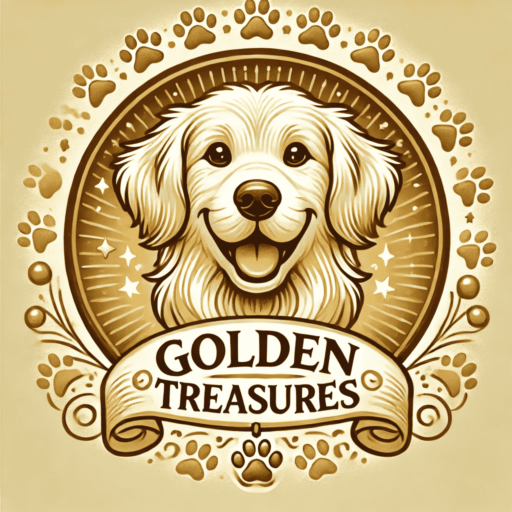

Links will be automatically removed from comments.